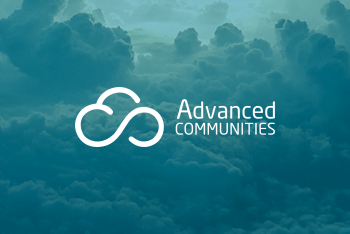Virtual Event Management: How to Plan a Virtual Event in Salesforce in 2025
Have you recently attended an information-packed webinar? Think of your experience right from the get-go: how you found out about the event, how the promotion lasted, and how it went all along. It may occur to someone that arranging this stuff is a no-brainer. But…
Virtual event management entails a thorough preparation, involving event planning, event promotion, and post-event tasks. Keep reading to see how you can plan your online events in Salesforce without turning a hair and what you might require for success.
What is Virtual Event Management in Salesforce?
Managing virtual events is the activities you perform to make your online event flawless. It’s how you prepare to declare your thoughts or the ones from other subject-matter experts online. Why is it convenient to plan virtual events in Salesforce? All your data stays connected and flocks down to the unified storehouse – your CRM. Thus, you can manage all aspects of your event, from registration and ticketing to marketing and attendee engagement. No more multiple tools and chaotic planning.
Types of Virtual Events in Salesforce
When it comes to choosing the type of virtual event, there is a risk of being swamped. Without further ado, here is the list of the most common virtual events.
- Webinars: being the most widespread type, webinars generally last from 45 to 80 minutes on average. They can be fee-based, but the rule of thumb is that they are completely free with an opt-in condition. Such virtual events let you hold a Q&A time, record the session, send it on-demand, and use it for further marketing purposes. To make the sessions more human, consider streaming both a slide deck and a speaker’s face during the event. This adds a friendly touch. The following screenshot is from our LinkedIn Live webinar on running events with Salesforce and Advanced Communities that we hosted together with Salesforce Ben this year.

- Virtual conference: you may think that in-person events and virtual conferences are alike. They do have lots in common like keynote presentations, speakers, agendas, breakouts, etc. But the thing is that such virtual events don’t offer as many networking opportunities and lead capture insights as an in-person event does. Salesforce streams a dime a dozen online conferences every month on its Salesforce+ streaming channel. Dreamforce is one of the examples and by the way, the Advanced Communities team is visiting it this year, too.
- Internal hybrid events: internal events and company-wide gatherings might not be the case for you if your teams are scattered across the globe. This is when internal hybrid events are your safest bet. Team training, department meetings, team building, and everything in between are not only time-effective but convenient for every party involved.
- External hybrid events: these virtual events are arranged for people outside of your company. These can be industry conferences, organization reports, etc. One crucial thing to remember about external hybrid events is that you should make sure the video is high quality because even people on the other end of the screen should feel present.
- Virtual exhibitions: event planning takes new features when it comes to exhibitions, museums, galleries, and other virtual events alike. You have to work wonders with presentations, visuals, or even guests invited. Locate additional cameras next to the expositions for enhanced presence or have specially trained guides or other staff members carry out mini-demos about them. Everything should be aimed at delivering the ultimate customer experience as if people are actually visiting the exhibitions.
How to Plan Virtual Events in Salesforce: 4-Step Instruction
How can you do everything right and minimize the risk of a mistake? Here is your go-to plan:
1. Create a Virtual Event Concept
Before we plunge deeper into managing a virtual event, let’s outline the following. You shouldn’t plan a virtual event the way you do physical events. Event organizers tend to paint all the virtual events with the same brush, forgetting that an in-person event has its own set of rules, from a visual setting to promotion. So if you want to organize a successful virtual event, answer the following questions first:
- Who is the event for?
- When will you run the event?
- What will the event sell/promote/encourage?
- What metrics should you gauge during and after the event?
- Is there a CTA that you can track afterward? Are there any materials like an ebook that you would like to share during the session?
- What will your plan be if the event goes south?
Don’t shrug off seasonal holidays and special dates as they might affect attendance. For instance, the summer season might pose a problem while potential attendees might have a time off.
Similarly, late December and early January aren’t the best months for a virtual conference. The reason is simple: the year is wrapping up and another one is just getting started, making the plans of the visitors adjust.
2. Select an Event Management Tool
Online meetings can’t run without proper virtual event technology. Luckily, Salesforce doesn’t lack robust functionality that would help you make a successful virtual event. So next time you are about to decide on the app for Salesforce event management, it’s paramount to consider several elements it should cover (by the way, following the link, you can download our exclusive AC Events Enterprise product sheet and uncover how it can accomplish your virtual event planning):
- Fully customizable event pages that you can design and sell tickets through it;
- Free compatibility with video conferencing tools like YouTube, Vimeo, etc.;
- In-built marketing automation for promoting the event to the best extent;
- Hassle-free event creation;
- Ability to create recurring events without numerous duplicates and unnecessary information;
- Pre-built reports and dashboards so that you can manage real-time metrics and store data within your Salesforce CRM.
AC Events Enterprise by Advanced Communities obtains all these elements and more. Thanks to the event technology our package is made with, you can create a virtual event on Experience Cloud seamlessly, using the Event Creation Wizard, customize an event page (we’ll discuss it further), and scrutinize reports.

How to Plan an Event in Salesforce in 2025: a Complete Event Management Process in 5 Steps

3. Outline Content and Strategy
Creating virtual events that resonate with your audience and achieve all the business objectives sounds back-breaking. Event planners often turn a blind eye to the whole preparation, just setting the date and topic for the event and calling it a night. That’s only the tip of it: you have to concentrate on crafting a compelling content strategy.
- Utilize Salesforce Digital Experiences: with all the Salesforce event technology and other massive potential, you can create private or public Salesforce communities for attendees to connect, discuss topics related to an event, and ignite the excitement. This is the example of how you can present the Events tab on your Experience Cloud site:
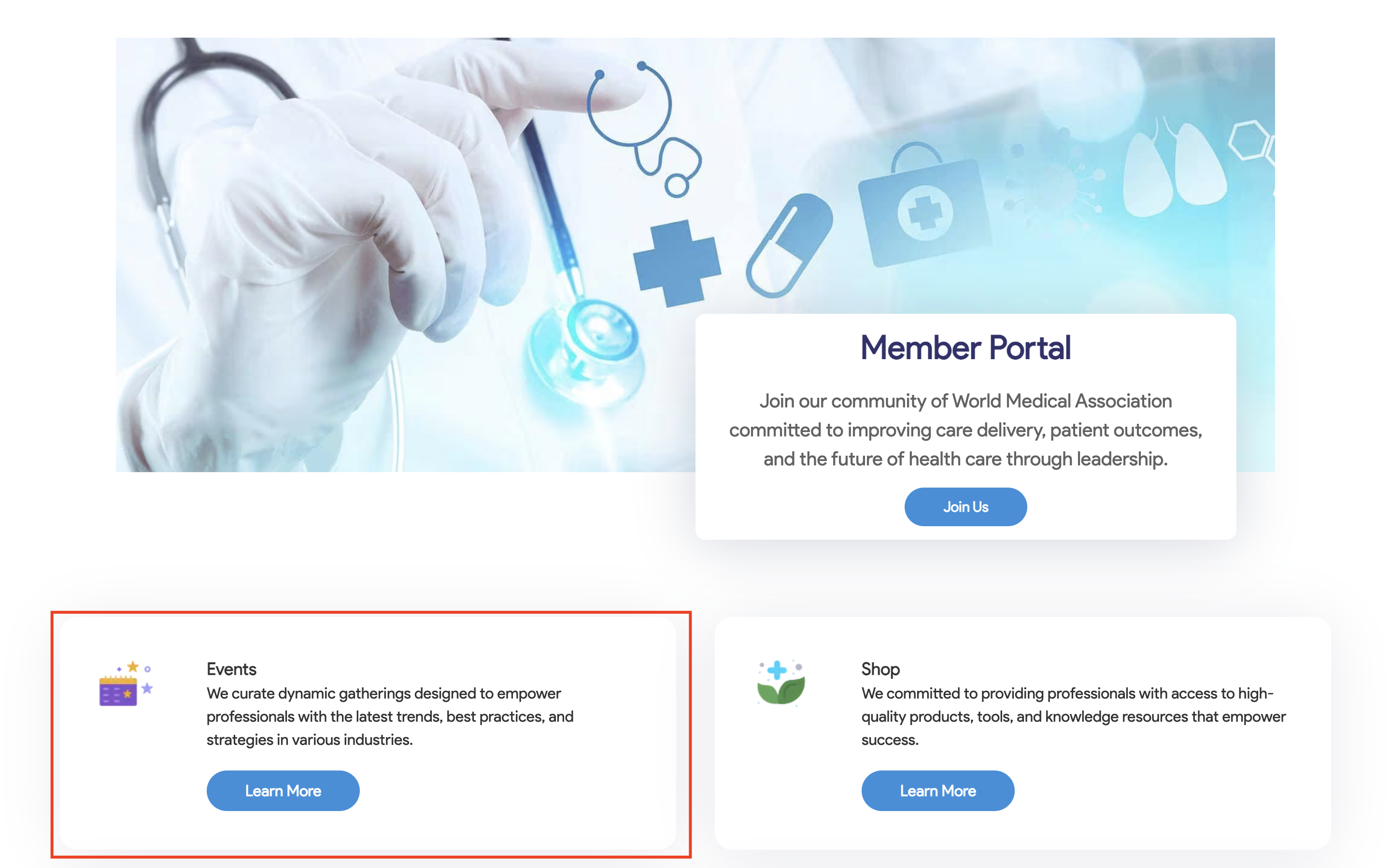
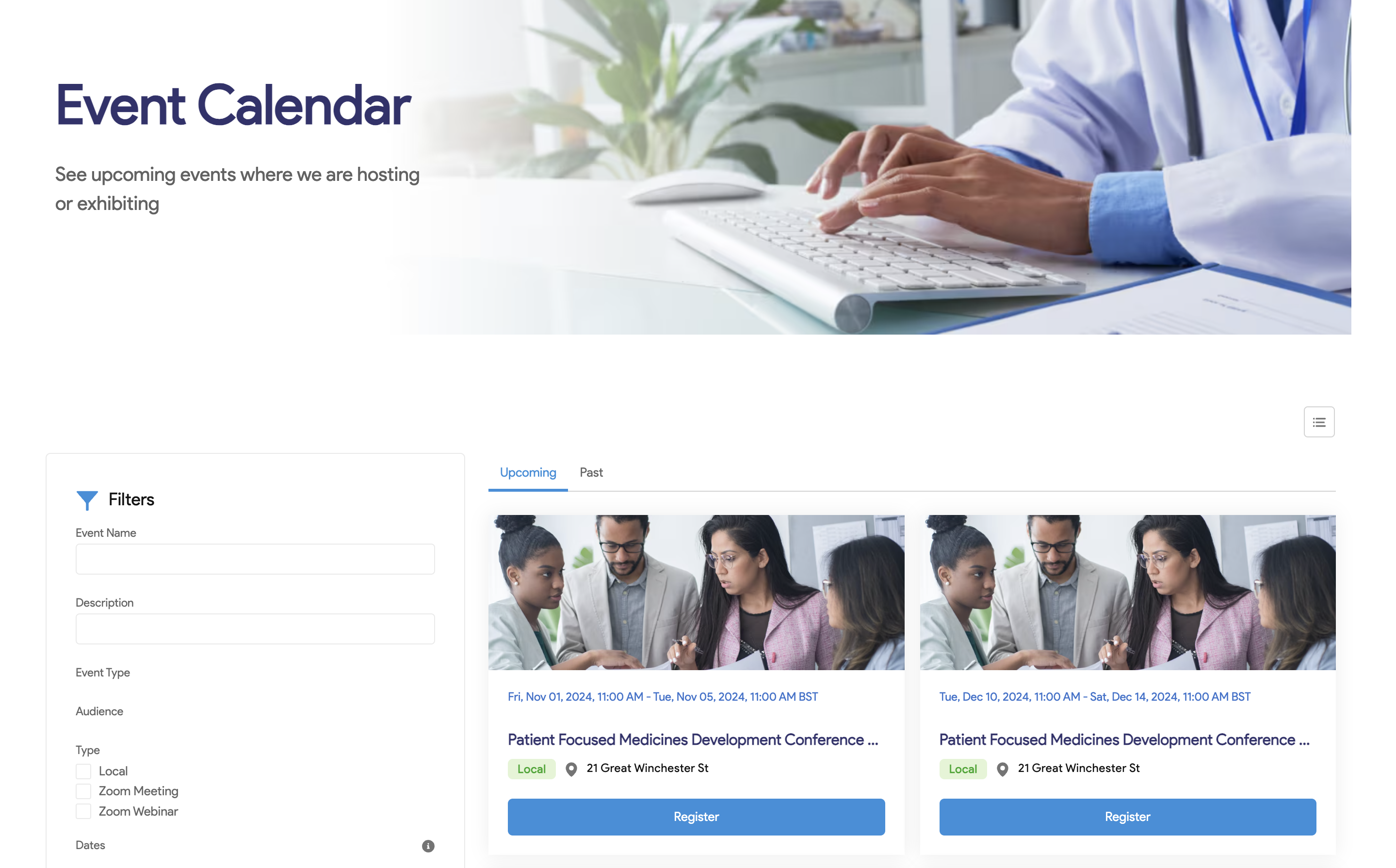
- Develop a personalized agenda: use the Salesforce AI suite and data analytics to segment event attendees based on their interests and tailor the agenda accordingly. Add speaker info, keynotes, sessions, sponsors, etc. Here’s the agenda created within the AC Events Enterprise package for Experience Cloud: this is the plan we have for our upcoming webinar happening September 12th.
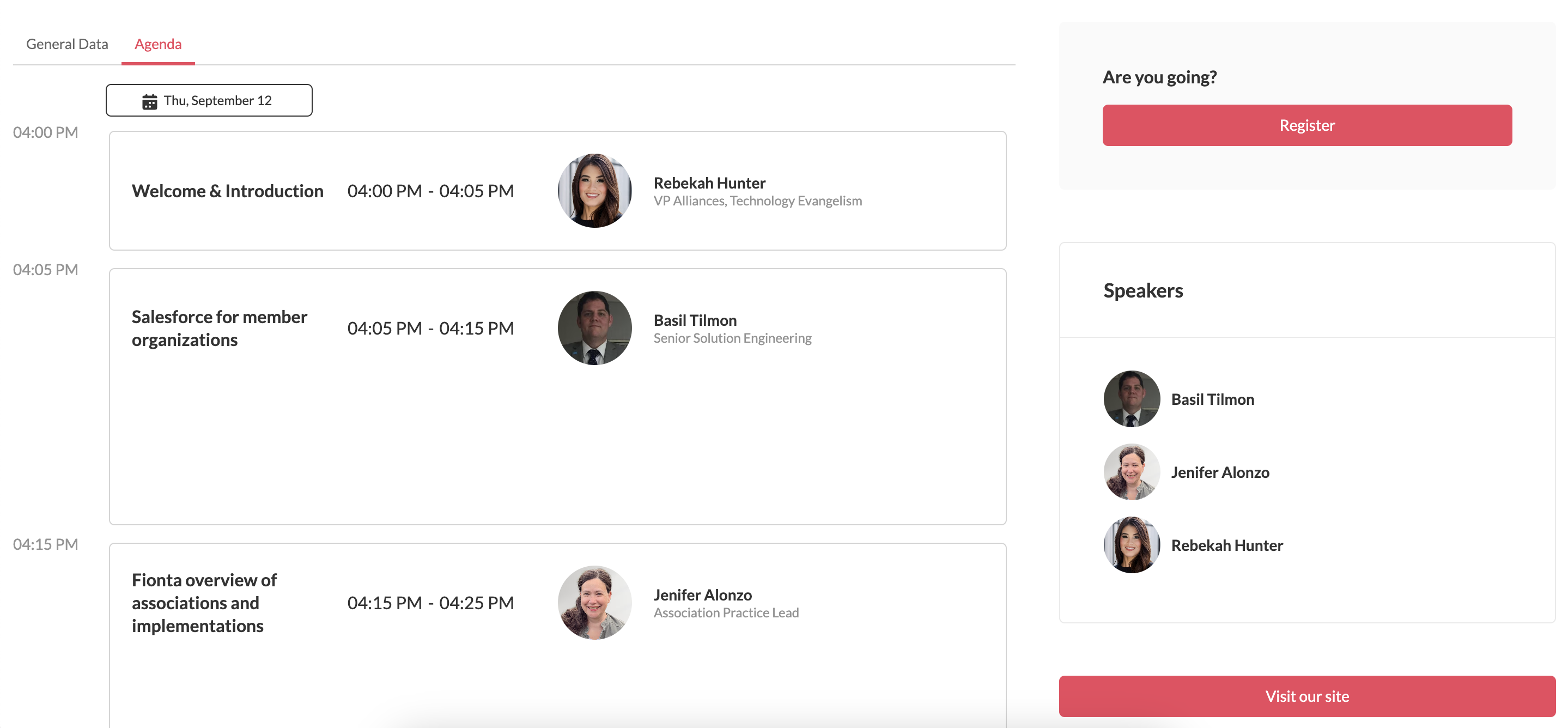
- Sprinkle your marketing magic: where would all the events end up without marketing, right? My point is that you have to send email invitations, reminders, pre- and post-event follow-ups for better reach. Plus, promote your virtual events on social media with an event hashtag, share speaker bios, and provide registration links.
- Practice the event routine beforehand: this does help! I wouldn’t mention this step if we at Advanced Communities didn’t follow it as well. Have special dry runs before an event so that the speakers feel confident on day X and you can minimize unexpected scenarios.
- Shoot video invitations: as easy as it gets, you can ask event speakers to make a 1-minute clip, inviting folks to your session. First, visuals are more digestible than a wall of text. Second, a video can be easily spotted on social media feeds and get reposted. To plant an idea in your head, here is how Rebekah Hunter presented her video invitation on our recent idea management webinar:
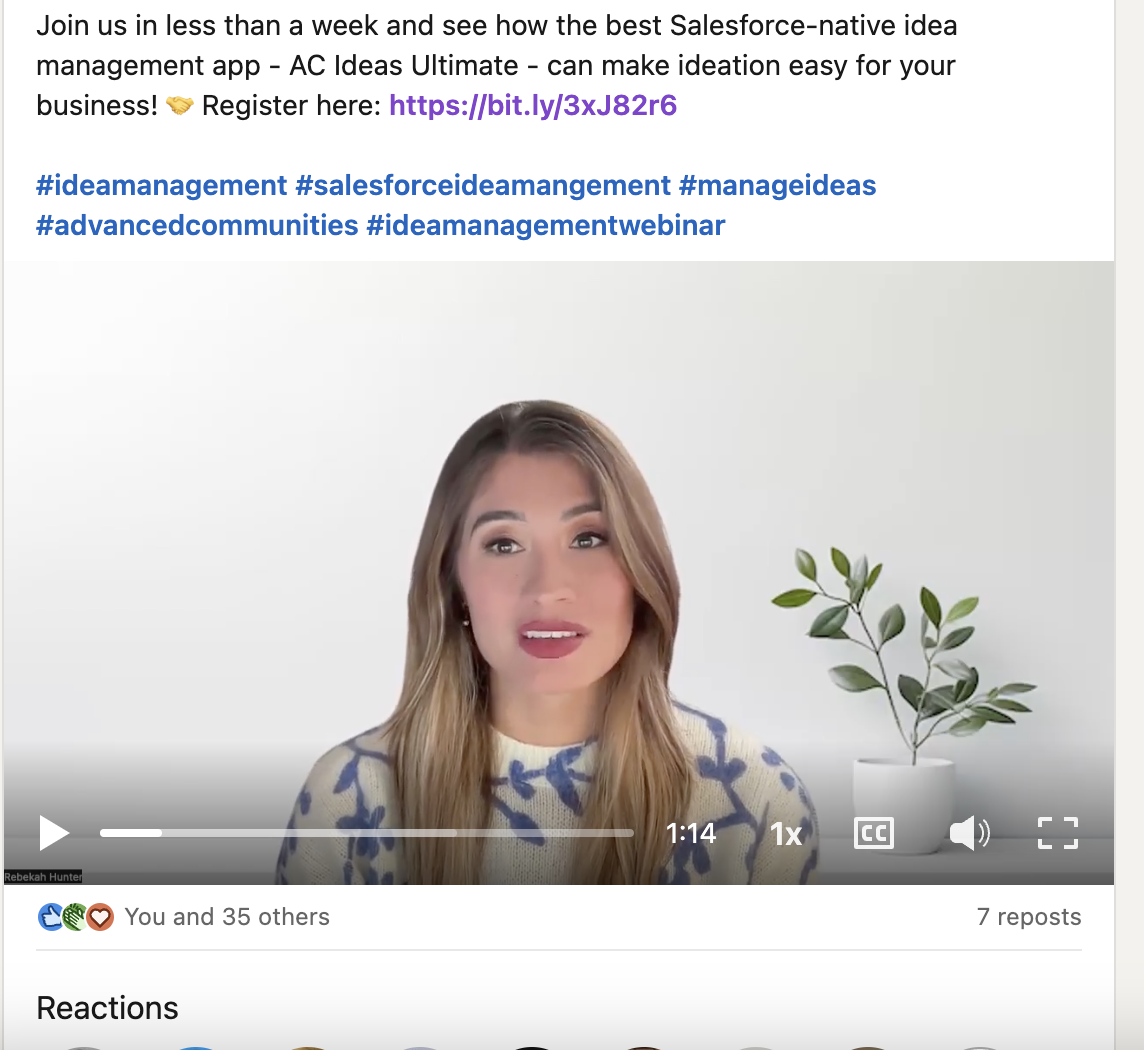
4. Design an Event Microsite
Just like in-person events, virtual ones, too, require a separate event page or a microsite, where all the key details are pointed out. If you run an Experience Cloud site, you can kill two birds with one stone (actually, more but you get the gist):
- Create a dedicated event page, adding such key data about your meeting as general data, images, agenda with an hourly schedule, speakers/subject matter experts, sponsors, etc. They will be seen on the site as separate tabs. Plus, you can insert CTAs for register or visiting your main company website;
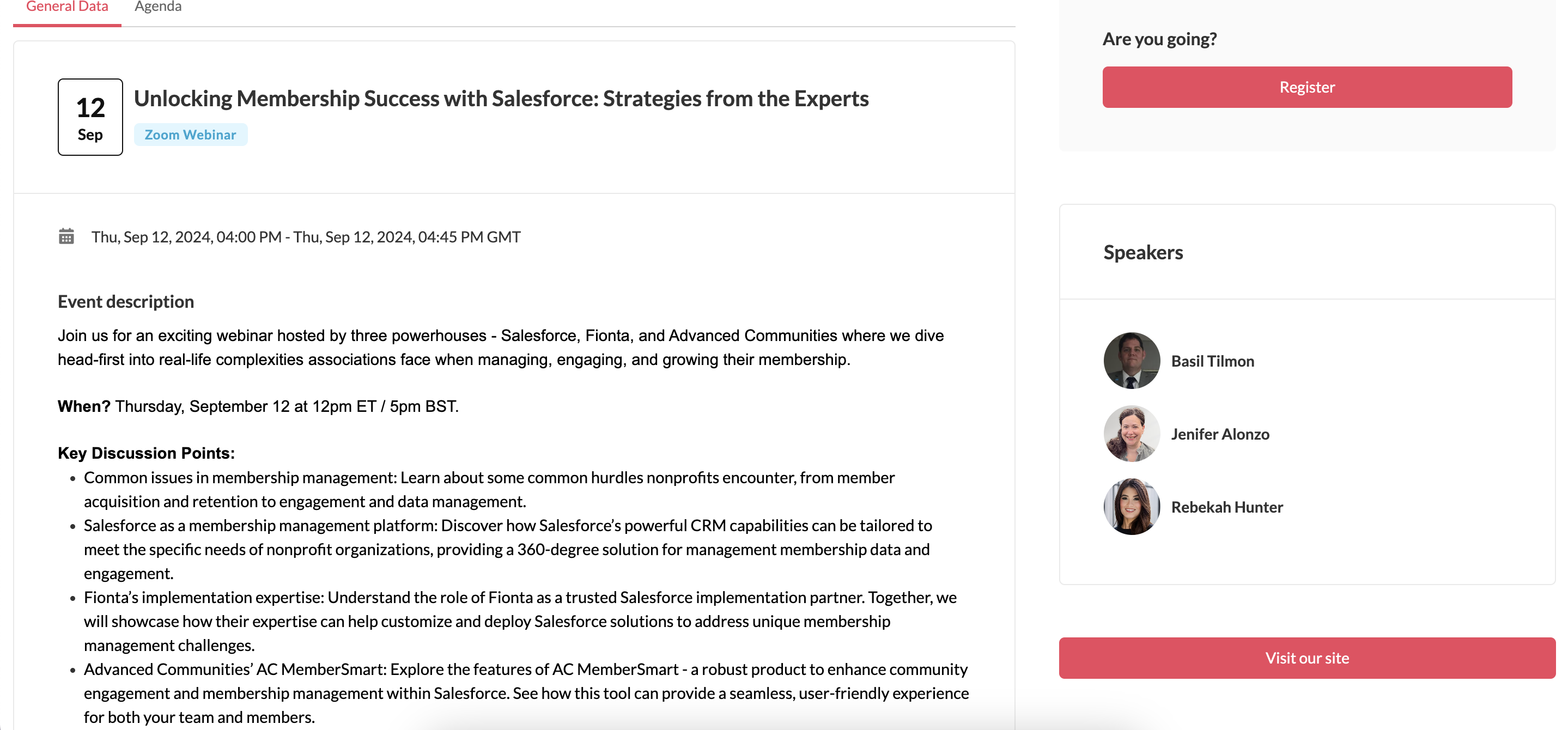
- Use your membership management software to assemble a perfect place where your event attendees can gather and be the first ones to find out about the planned events. If your software allows, you can also generate reports based on data including top-visited events, top revenue events, and so much more.
The Ultimate Virtual Events Checklist
- Start with the concept, proceed with the content
- Adopt an event management app like AC Events Enterprise to reach your goals
- Design an event page for your Experience Cloud site
- Be creative with promotion and marketing
Final Thoughts
Virtual event management isn’t ball and chain if it’s executed wisely. Keep these things in your mind while event planning and the success won’t be long in coming: put together a steady plan for the event, outline the content beforehand, and have a contingency plan if need be. If you need help with virtual event planning, you can reach out to Advanced Communities and we’ll help you plan your virtual event with our finest expertise in the industry.
Q&A
What is Virtual Event Planning?
Planing a virtual event involves different activities from discussing an event agenda with speakers to designing promo materials in sync with a marketing department. It is also about staffing, hosting, and choosing the right virtual event technology.
How Much does It Cost to Have Virtual Events?
The most exciting thing is that virtual event planning often doesn’t cost a thing. Of course, under one condition: the event programme doesn’t imply otherwise. Online event planning might be completely free for you if you use such platforms as Zoom or Google Meet. You can also use paid advertising platforms to promote your event. However, this might not be your safest bet if you are on a budget. One of the most obvious things that might result in fees is speaker expenses, virtual booths, or pre- and post-event materials.
What does a Virtual Event Manager do?
A virtual event planner or a manager, if you will, takes full responsibility for planning, organizing, and executing online gatherings. The role encompasses such tasks as event conceptualization, platform selection, content development, marketing & promotion, attendee management, technical support, and post-event analysis. Everything an event manager does is aimed at ensuring a seamless and impactful experience for both attendees and a company.
What Makes a Successful Virtual Event?
A successful virtual event is the one that reaches all the goals set and provides positive attendee engagement. Among the factors that mark an event a success, there are 1) engaging content – it should be relevant, informative, and interactive, 2) high technical ground – virtual event planning can go without a user-friendly platform, high-quality audio & video, and a quick troubleshooting plan, if something goes awry, 3) auspicious marketing & promotion – you should reach the target audience with segmented newsletters, regular social media posts, and clear communication, 4) measurable results – make sure you set perfect goals during virtual event planning, measure key metrics (attendance rate, event ROI, and others), and use data to unveil areas for improvement.
What is the Downside of Virtual Events?
Virtual events might present a number of drawbacks to companies. First, there are technical challenges you might need to battle. The Internet connection issues, platform crashes, or audio/video quality problems. Second, virtual events don’t always deliver networking possibilities for the audience as in-person events. Third, such events aren’t always accessible and pose a problem for those who need special treatment. Fourth, different time zones may become a barrier for coordinating online events as they limit attendance.



